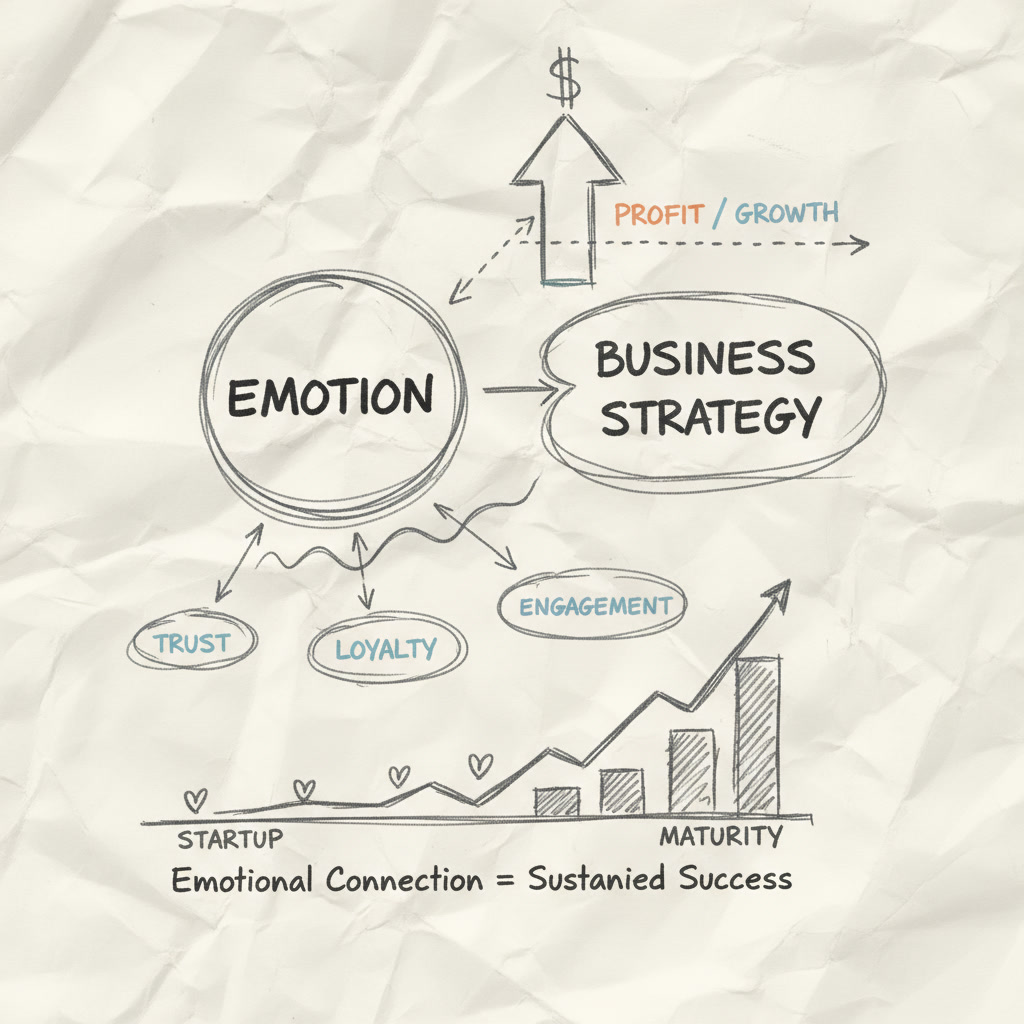Why Emotion Is a Valid Business Strategy
For most of my career, I worked in environments where emotion felt slightly out of place, almost like a fingerprint smudged across an otherwise clean whiteboard. Strategy was expected to be rational, model-driven, and comfortably objective, while emotion lingered at the edges as something we might acknowledge only after the “real work” was finished.
But the longer I’ve been involved in large-scale decisions, cross-functional launches, and employer transformation work, the clearer it became that emotion isn’t a side note to strategy. It’s one of the forces that determines whether strategy takes root, falls flat, or never even makes it out of the room. Research supports this more strongly than most leaders realize. Neuroscientist Antonio Damasio famously demonstrated that when emotional processing is impaired, decision-making collapses even if logic remains intact¹.
Emotion Makes Strategy Stick
This shift in my understanding didn’t happen all at once. It came from years of watching how people behave when new ideas collide with old habits. For example, at Indeed, in the early work we did to increase adoption of a new apply experience, the data made the logic obvious and the benefits clear. Yet the organizations that moved fastest weren’t simply responding to evidence. They were responding to the story of the change and how it made them feel. Optimism accelerated everything. Confusion slowed it. Distrust brought adoption to a full stop. At the time, we weren’t formally measuring sentiment, but emotion was shaping outcomes long before the numbers caught up.
As I paid closer attention, the behavior started to make more sense. Later, when I looked into the science, I found that neuroscience supported what I was seeing. Joseph LeDoux showed that emotional circuits activate milliseconds before conscious thought forms². Daniel Kahneman later expanded this idea with his System 1 and System 2 framework³, revealing that the brain relies on fast emotional interpretation long before rational reasoning engages.
Instinct isn’t the absence of logic. It’s logic condensed into something you feel first.
I remember a policy rollout where adoption had stalled despite solid logic, clear documentation, and careful sequencing. During a conversation with a senior leader, I shifted my explanation away from the mechanics of the policy and toward the emotional reality that team would experience. They would gain more predictability, reduce unnecessary handoffs, and work with clearer expectations. The shift in the response was immediate. They weren’t reacting to the policy anymore, they were reacting to the sense of clarity it created. Psychologist Paul Ekman described emotion as a meaning-making system⁴, and in moments like that, the theory becomes real. Emotion turns information into something people can actually act on.
Emotion Is a Competitive Advantage
My early years at Apple made this unmistakable. The pursuit of simplicity and clarity wasn’t aesthetic, it was strategic, rooted in the belief that simplicity triggers trust and ease. People lean into experiences that feel intuitive long before they analyze the reasons behind them. Harvard Business Review has repeatedly shown that teams grounded in healthy emotional culture outperform those that treat emotion as irrelevant⁵. Trust moves faster than persuasion and clarity reduces friction. Emotion, in this sense, becomes a structural asset.
“Charisma can move a meeting. Shared emotional posture can move an entire organization.”
Organizational psychologist Sigal Barsade’s work on emotional contagion demonstrated that collective emotional states shape performance, collaboration, and even ethical behavior⁶. In the most complex, ambiguous environments I’ve worked in, the teams that held together weren’t powered by perfect documentation. They were anchored by a shared emotional foundation, commitment, resilience, and belief in the purpose behind the work. That emotional alignment scales more effectively than individual charisma ever could.
Emotion Turns Strategy Into Behavior
Across neuroscience, psychology, and organizational research, the pattern is unmistakable: emotion is the mechanism that turns strategy into behavior. It shapes attention, which shapes understanding, which shapes the choices people make. When leaders try to strip emotion out in pursuit of “pure logic,” they often end up with strategies that look strong conceptually but collapse under real human conditions.
Emotion doesn’t replace logic. It completes it. It gives it relevance, traction, and staying power. Almost every meaningful win in my career has been a story of logic and emotion arriving at the same destination, one providing clarity and the other providing momentum. When both align, people don’t just understand a strategy, they internalize it. And once they internalize it, the work finally moves. And if you’re not entirely sure how to feel, or what your instincts are trying to signal, that’s not a failure. It’s simply a sign that the emotional layer of your strategy needs translation, and this is where I can help.
Sources
- Damasio, A. (1994). Descartes’ Error: Emotion, Reason, and the Human Brain.
- LeDoux, J. (1996). The Emotional Brain.
- Kahneman, D. (2011). Thinking, Fast and Slow.
- Ekman, P. (2003). Emotions Revealed.
- Barsade, S.G., and O’Neill, O.A. (2016). “Manage Your Emotional Culture.” Harvard Business Review.
- Barsade, S.G. (2002). “The Ripple Effect.” Administrative Science Quarterly.


No Comments